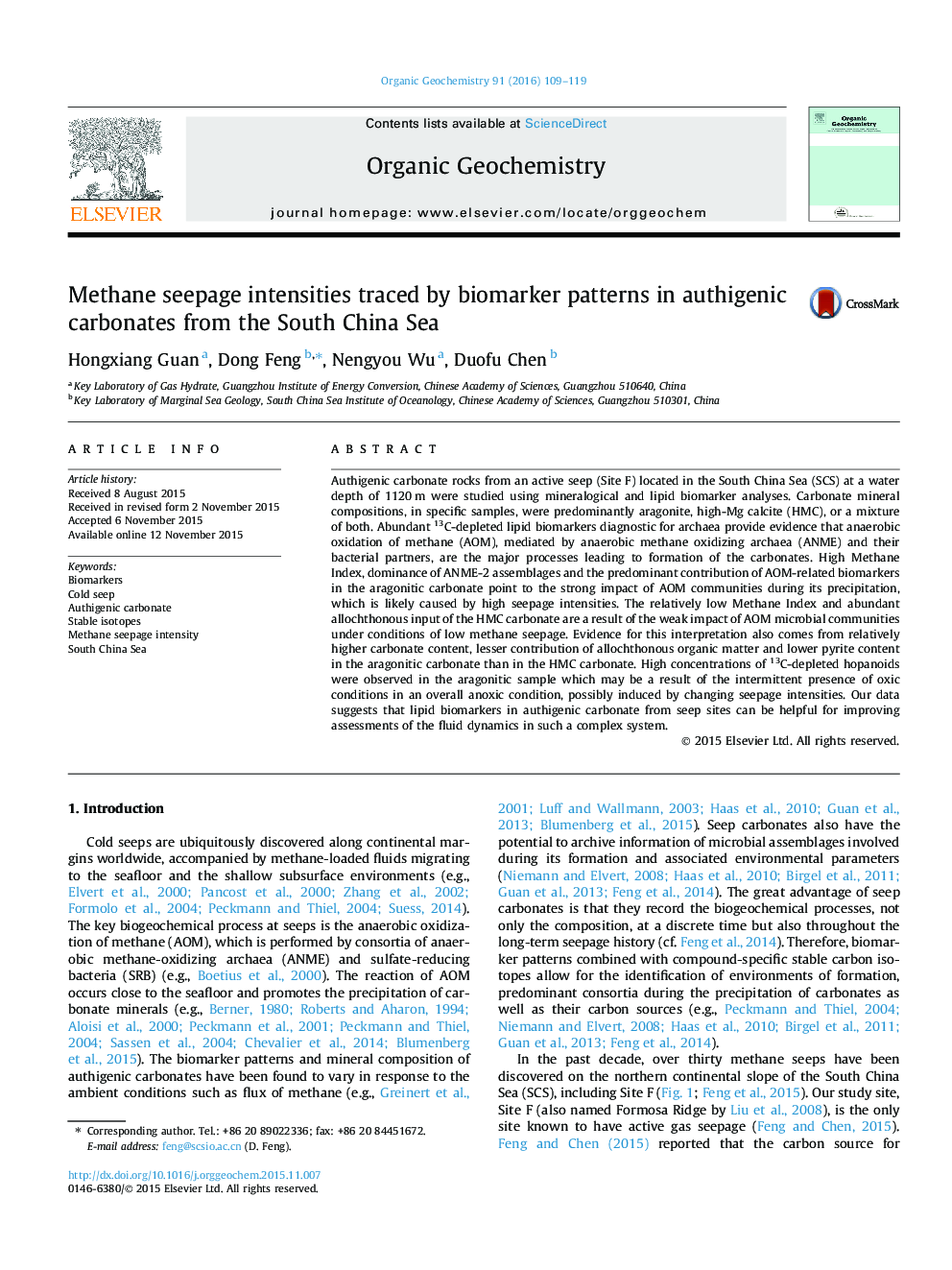| Article ID | Journal | Published Year | Pages | File Type |
|---|---|---|---|---|
| 5161439 | Organic Geochemistry | 2016 | 11 Pages |
Abstract
Authigenic carbonate rocks from an active seep (Site F) located in the South China Sea (SCS) at a water depth of 1120Â m were studied using mineralogical and lipid biomarker analyses. Carbonate mineral compositions, in specific samples, were predominantly aragonite, high-Mg calcite (HMC), or a mixture of both. Abundant 13C-depleted lipid biomarkers diagnostic for archaea provide evidence that anaerobic oxidation of methane (AOM), mediated by anaerobic methane oxidizing archaea (ANME) and their bacterial partners, are the major processes leading to formation of the carbonates. High Methane Index, dominance of ANME-2 assemblages and the predominant contribution of AOM-related biomarkers in the aragonitic carbonate point to the strong impact of AOM communities during its precipitation, which is likely caused by high seepage intensities. The relatively low Methane Index and abundant allochthonous input of the HMC carbonate are a result of the weak impact of AOM microbial communities under conditions of low methane seepage. Evidence for this interpretation also comes from relatively higher carbonate content, lesser contribution of allochthonous organic matter and lower pyrite content in the aragonitic carbonate than in the HMC carbonate. High concentrations of 13C-depleted hopanoids were observed in the aragonitic sample which may be a result of the intermittent presence of oxic conditions in an overall anoxic condition, possibly induced by changing seepage intensities. Our data suggests that lipid biomarkers in authigenic carbonate from seep sites can be helpful for improving assessments of the fluid dynamics in such a complex system.
Related Topics
Physical Sciences and Engineering
Chemistry
Organic Chemistry
Authors
Hongxiang Guan, Dong Feng, Nengyou Wu, Duofu Chen,
